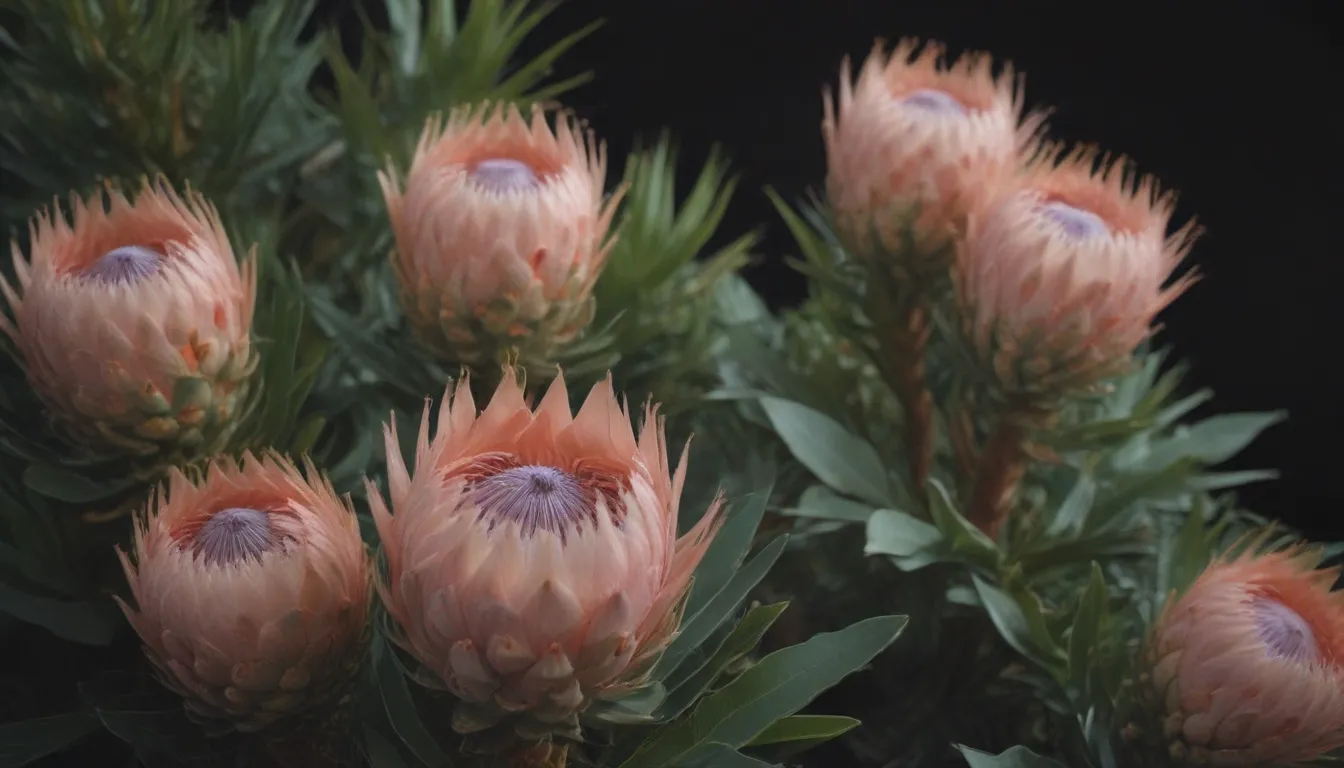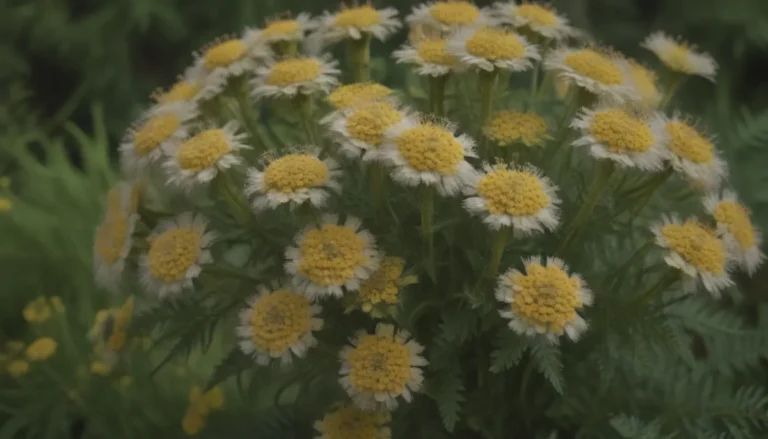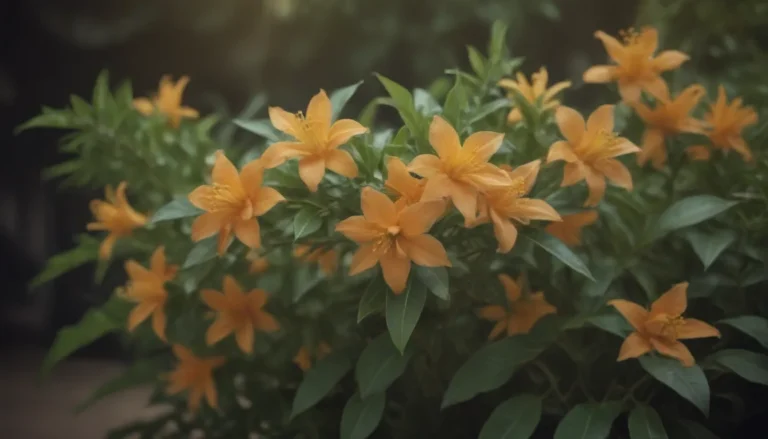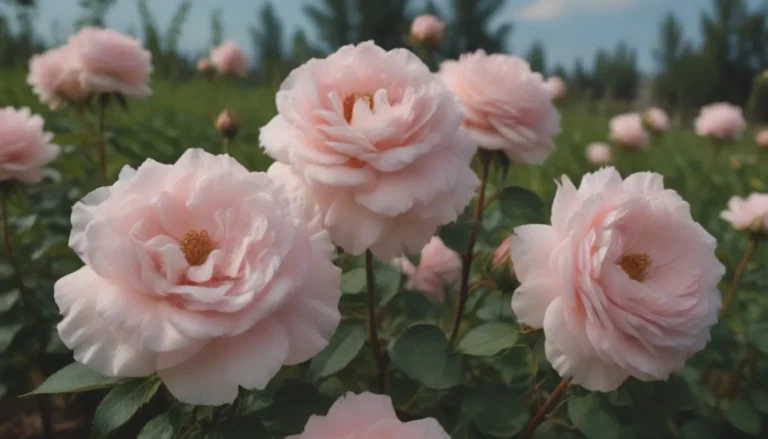The Ultimate Guide to Growing and Caring for Protea Plants

Welcome to the ultimate guide on how to grow and care for Protea plants! The Protea genus, part of the Proteaceae family, consists of over 1,000 unique species. These fascinating plants can thrive in warm, dry climates and range in size from low shrubs to tall trees. Protea flowers are goblet-shaped, blooming in large clusters with fluffy centers surrounded by bright and spiky bracts. It’s important to note that some parts of the plant, including the flowers, nectar, and seeds, can be toxic to humans and pets.
Protea Plant Care
Protea plants thrive in regions with hot and sunny climates, where many other flowering plants may struggle to survive. Their thick, hard leaves enable them to withstand harsh conditions, making them a resilient addition to any garden.
Light
Protea plants require good air circulation and full sunlight to thrive. The more sun they receive, the more flowers they will produce. Full sun also helps keep Protea plants dry, preventing the growth of harmful fungi like Phytophthora that can attack the roots and leaves of waterlogged plants.
Soil
Protea plants can thrive in various soil types, as long as the soil drains well. From sandy or rocky soil to loamy soil, Proteas are adaptable. Their roots grow horizontally just below the soil surface, making them ideal for rocky garden areas. To improve drainage when planting Proteas outdoors, mix bark and grit into the soil to prevent waterlogging.
Water
When Protea plants are establishing themselves, water them regularly. Once they are mature, water established plants every two to three weeks. During the growing season, increase watering frequency to once a week when the weather is dry, particularly when the plant is setting buds and flowering.
Temperature and Humidity
Protea plants can tolerate a wide range of temperatures, from as low as 23 degrees Fahrenheit to as high as 100 degrees Fahrenheit. However, they may struggle in extremely humid climates. It’s essential to plant Proteas in the appropriate hardiness zone for the specific variety to ensure their longevity.
Fertilizer
Protea plants generally do not require fertilizer, as excessive phosphorus can harm them. Their shallow roots make them sensitive to disturbance, so be careful when applying mulch to avoid damaging the roots.
Types of Protea Plants
Here are some popular varieties of Protea plants:
- Leucospermums
- Serrurias
- ‘King Protea’ (Protea cynaroides)
Pruning
Pruning Protea plants helps maintain their shape and encourages new growth. When harvesting flowers, remove spent flower heads along with most of the stem to promote bushiness. Avoid pruning unflowered stems, as they will produce blooms the following season.
Propagating Protea
Propagating Protea plants is best done using cuttings harvested between December and April. With the correct method, successful propagation can be achieved to expand your Protea collection.
Potting and Repotting
Protea plants thrive in well-draining medium to large pots. When potting Proteas, mix equal parts peat, gravel, and sand for optimal growth. While Proteas prefer nutrient-poor soil, a layer of mulch can help them retain moisture. To ensure the health of your Protea plant, consider repotting it annually.
Common Pests and Plant Diseases
Protea plants are typically resistant to pests and diseases due to their large, hard, and leathery leaves. The leaves are designed to conserve water, resist drought, and deter insect pests. In areas with cooler temperatures, some gardeners have had success moving Protea plants indoors during the colder months and covering them with fleece.
Similar Flower Options
If you’re looking for other flowers with vibrant colors and unique shapes similar to Proteas, consider the following options:
- Football or Cremone Mums
- Zinnias
- Leucadendrons
These flowers offer a variety of colors, textures, and shapes that can complement your garden alongside Protea plants. Various Leucadendron varieties, such as ‘Safari Sunset’ and ‘Inca Gold,’ provide stunning color options for your garden.
In conclusion, Protea plants are a remarkable addition to any garden, offering stunning flowers and unique foliage. By following the care tips outlined in this guide, you can successfully grow and maintain healthy Protea plants in your own backyard. Remember to provide ample sunlight, well-draining soil, and minimal water to keep your Proteas thriving for years to come.
References:
– Smith, James P. Jr, An Annotated List Of The Poisonous And Injurious Vascular Plants Of The United States. Cal Poly Humboldt Botanical Studies, no. 109, 2022.
– Department of Primary Industries and Regional Development. Government of Western Australia. Leaves. Protea Atlas Project.





